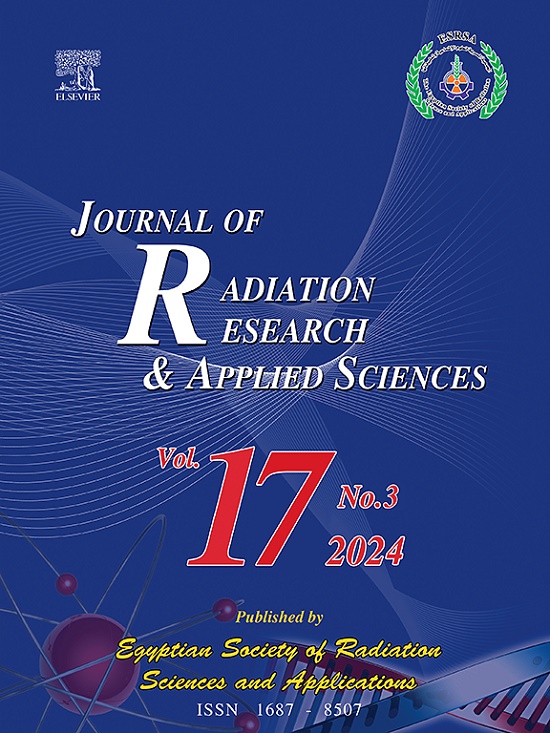含马兰戈尼对流的纳米流体热溶质对流:考虑热电泳和热辐射效应的人工神经网络研究
IF 1.7
4区 综合性期刊
Q2 MULTIDISCIPLINARY SCIENCES
Journal of Radiation Research and Applied Sciences
Pub Date : 2025-05-17
DOI:10.1016/j.jrras.2025.101612
引用次数: 0
摘要
采用神经网络反向传播方法结合人工智能集成的Levenberg-Marquardt算法,综合分析了受洛伦兹力影响的热涌纳米流体热溶质马兰戈尼对流的热辐射。为了解释质量传热和流体流动,将非线性耦合偏微分方程(PDE)转化为具有相似标度的常微分方程(ODE)。然后用Bvp4c方法对这些方程进行数值求解。所建议的模型在许多工业和技术过程中具有重要的用途,其中传质和热量是重要的因素。它用于复杂的材料加工,冷却系统和微流体装置,其中精确的热控制是至关重要的。该研究对基于纳米技术的冷却机制,包括核反应堆安全和半导体芯片冷却具有特殊意义。此外,该模型结合了马兰戈尼对流、热电泳和热辐射效应,使其适用于太阳能收集、生物医学工程和航空航天技术,所有这些都依赖于有效的散热和流体稳定性。浓度分布随热泳参数的增大而减小。本文章由计算机程序翻译,如有差异,请以英文原文为准。
Thermo-solutal convective flow of nanofluid with Marangoni convection: An artificial neural network study considering thermophoresis and thermal radiation effects
A neural network backpropagation approach combined with the AI-integrated Levenberg-Marquardt algorithm provides a comprehensive analysis of the thermal radiation on thermos-solutal Marangoni convective flow of nanofluid with thermophoresis influenced by Lorentz force effects. In order to explain mass and heat transmission and fluid flow, non-linear, coupled PDE (partial differential equations) are transformed into ODE (ordinary differential equations) with similarity scaling. The Bvp4c method is then used to resolve these equations numerically. The suggested model has important uses in many industrial and technical processes where mass transfer and heat are important factors. It is used in sophisticated material processing, cooling systems, and microfluidic devices where accurate thermal control is crucial. The research holds special significance for cooling mechanisms based on nanotechnology, including nuclear reactor safety and semiconductor chip cooling. Furthermore, the model's incorporation of Marangoni convection, thermophoresis, and thermal radiation effects renders it applicable to solar energy harvesting, biomedical engineering, and aerospace technology, all of which depend on effective heat dissipation and fluid stability. The concentration profile decreases as increase the thermophoretic parameter rise.
求助全文
通过发布文献求助,成功后即可免费获取论文全文。
去求助
来源期刊

Journal of Radiation Research and Applied Sciences
MULTIDISCIPLINARY SCIENCES-
自引率
5.90%
发文量
130
审稿时长
16 weeks
期刊介绍:
Journal of Radiation Research and Applied Sciences provides a high quality medium for the publication of substantial, original and scientific and technological papers on the development and applications of nuclear, radiation and isotopes in biology, medicine, drugs, biochemistry, microbiology, agriculture, entomology, food technology, chemistry, physics, solid states, engineering, environmental and applied sciences.
 求助内容:
求助内容: 应助结果提醒方式:
应助结果提醒方式:


